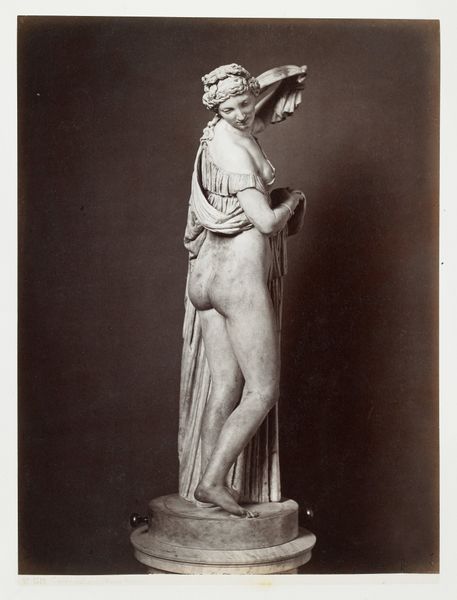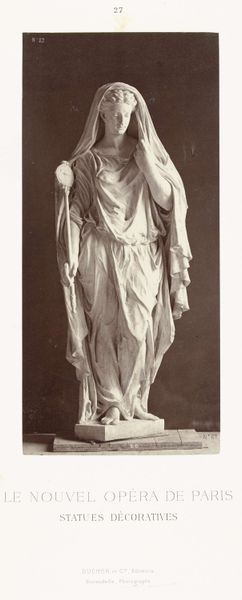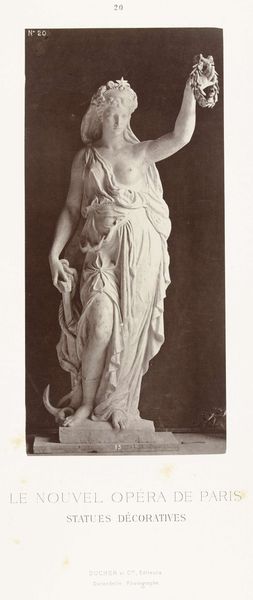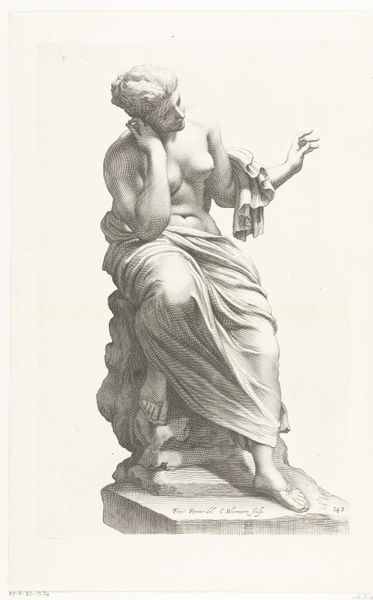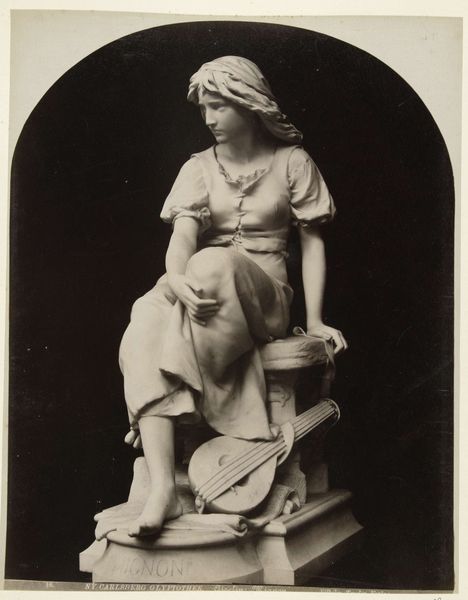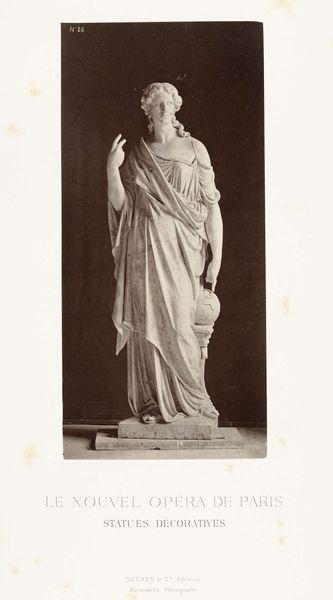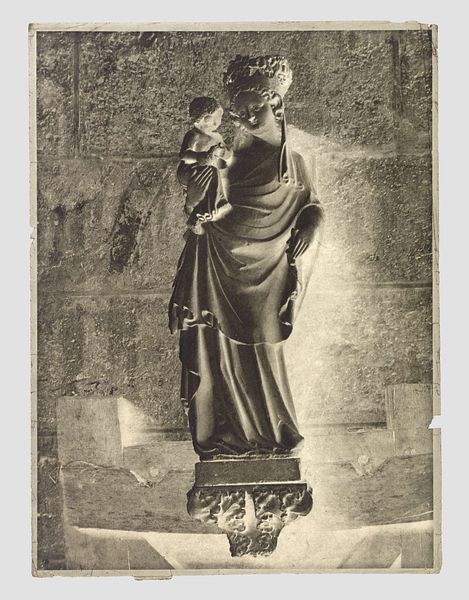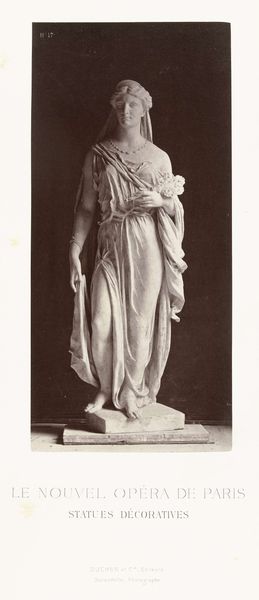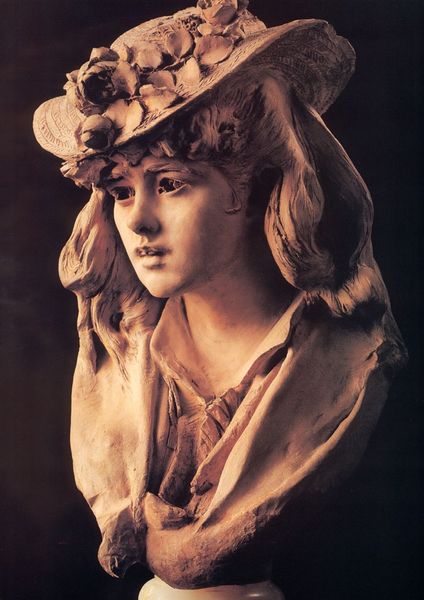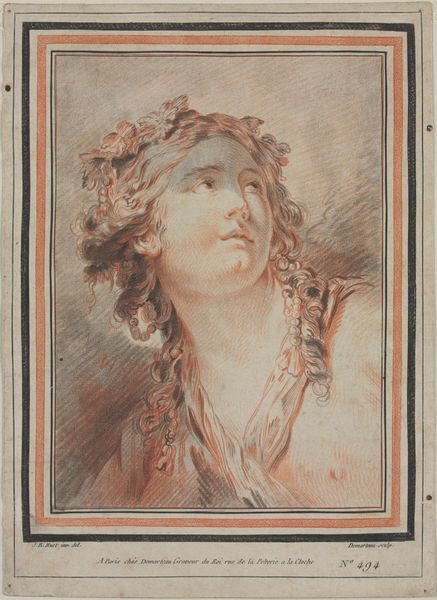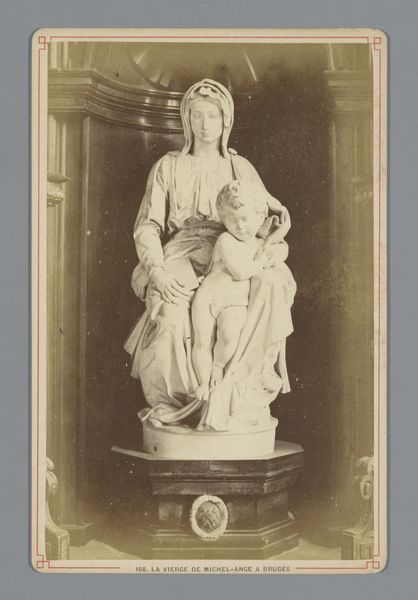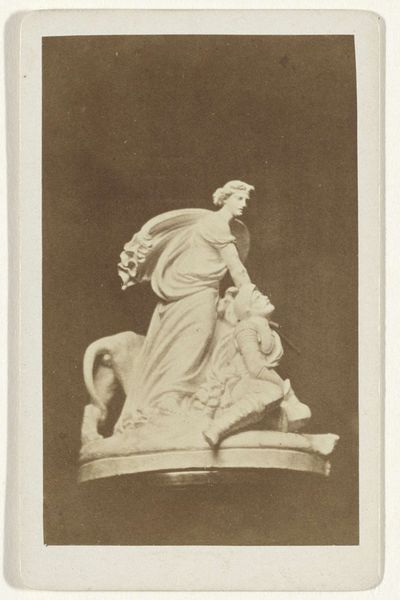
carving, photography, sculpture
#
portrait
#
carving
#
sculpture
#
photography
#
sculpture
#
symbolism
Copyright: Public domain
Editor: This is Fernand Khnopff’s “Standing Woman” from 1898. The piece looks like a photograph of a sculpture, possibly plaster, and its stillness and her closed eyes give off an almost ethereal mood. What do you make of this striking image? Curator: It's a potent symbol, isn't it? Khnopff, deeply involved in the Symbolist movement, used imagery loaded with meaning. Here, we see the deliberate use of photography, not just to document sculpture but to transform it, blurring the lines between reality and artistic ideal. Think about the late 19th-century obsession with the ideal woman, and how the image functions. What elements draw your eye? Editor: The band across her eyes, definitely. And the way her hands are posed…almost as if listening intently. Curator: Exactly. It might be a critique of idealized beauty and its impact on the female psyche at that time. Khnopff places her in an almost iconic, detached space through composition. How might social constructs have influenced how this "standing woman" was received then? Editor: Given the conventions of the period, she likely challenged ideas about women being subservient or primarily objects of beauty? Her introspective gaze – or lack thereof since her eyes are covered - rejects outward engagement, doesn't it? Curator: Precisely. She embodies a kind of interiority that departs from prevailing societal expectations. And the sculptural medium itself lends weight, elevating her but also making her an artifact. What purpose did art serve during this historical period? How are those social aims or impacts realized or not realized through Khnopff’s work here? Editor: That's insightful. I never thought of sculpture in this way - not just about form but its political implications too. Thank you for showing how art serves in larger conversations of the period. Curator: Indeed. Reflecting on these societal forces helps us appreciate and decode artistic expression with richer context.
Comments
No comments
Be the first to comment and join the conversation on the ultimate creative platform.
